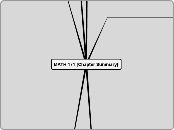MATH 171 (Chapter Summary)
Chapter 4 : Algebraic Thinking
Variables
Algebraic expressions
Equations
Functions
Functions as Rules
Functions as Machines
Functions as Equations
Functions as Arrow Diagrams
Functions as Tables and Ordered Pairs
Functions as Graphs
Chapter 5 : Intergers and Number Theory
Integers and the Operations of Addition and Subtraction
Integer Addition
Charged-Field Model
Number-Line Model
Properties of Integer Addition
Integer Subtraction
Charged-Field Model
Number-Line Model
Multiplication and Division of Integers
Integer Multiplication
Properties of Integer Multiplication
Integer Division
Ordering Integers
Divisibility
Divisibility Rules
Divisibility Test for 2
Divisibility Test for 5
Divisibility Test for 10
Divisibility Test for 4
Divisibility Test for 8
Divisibility Test for 3
Divisibility Test for 9
Divisibility Test for 11
Divisibility Test for 6
Prime and Composite Numbers
Sieve of Eratosthenes

Greatest Common Divisor and Least Common Multiple
Clock and Modular Arithmetic
Clock Arithmetic
Modular Aritmnetic
Chapter 6 : Rational Numbers as Fractions
The Set of Rational Numbers
Simplifying Fractions
Equality of Fractions
Ordering Rational Numbers
Denseness of Rational Numbers
Addition, Subtraction, and Estimation with Rational Numbers
Adding Rational Numbers
Properties of Addition for Rational Numbers
Subtraction of Rational Numbers
Estimation with Rational Numbers
Munltiplication and Division of Rational Numbers
Multiplication of Rational Numbers
Properties of Multiplication of Rational Numbers
Multiplicative Identity and Multiplicative Inverse of Rational Numbers
Distributive Property of Multiplication Over Addition for Rational Numbers
Mutiplication Property of Equality for Rational Numbers
Multiplication Property of Inequality for Rational Numbers
Multiplication Property of Zero for Rational Numbers
Division of Rational Numbers
Chapter 1 : An Introduction to Problem Solving
Four-Step Problem-Solving Process
Strategies for Problem Solving
Explorations with Patterns
Arithmetic Sequences
Geometric Sequences
Fibonacci Sequences
Other Sequences
Chapter 2 : Numeration Systems and Sets
Numeration Systems
Ancient Numeration Systems
Babylonian
Egyptian
Mayan
Greek
Roman
Hindu-Arabic
Other Number Base Systems
Describing Sets
Other Set Operations and Their Properties
Set Operations
Set Interaction
Set Union
Properties of set opertions
Associative Property of Set Intersection
Associative Property of Set Union
Distributive Property of Set Intersection over Union
Chapter 3 : Whole Numbers and Their Operations
Addition and Subtraction of Whole Numbers
Addition of Whole Numbers
Solving problems by using Model
Set Model
Number-Line Model
Properties of Addition
Subtraction of Whole Numbers
Solving Problems by using Model
Take-away Model
Missing-Addend Model
Number-Line Model
Properties of Subtraction
Algorithms for Whole-Number Addition and subtraction
Multiplication and Division of Whole Numbers
Multiplication of Whole Numbers
Solving Problems by using Model
Repeated-Addition Model
Number-Line Model
Cartesian-Product Model
Properties of Multiplication
Division of Whole Numbers
Solving problems by using Model
Algorithms for Whole-Number Multiplicationi and Division
Mental Mathematics and Estimation for Whole-Number Operations
Mental mathematics
Computational estimation
